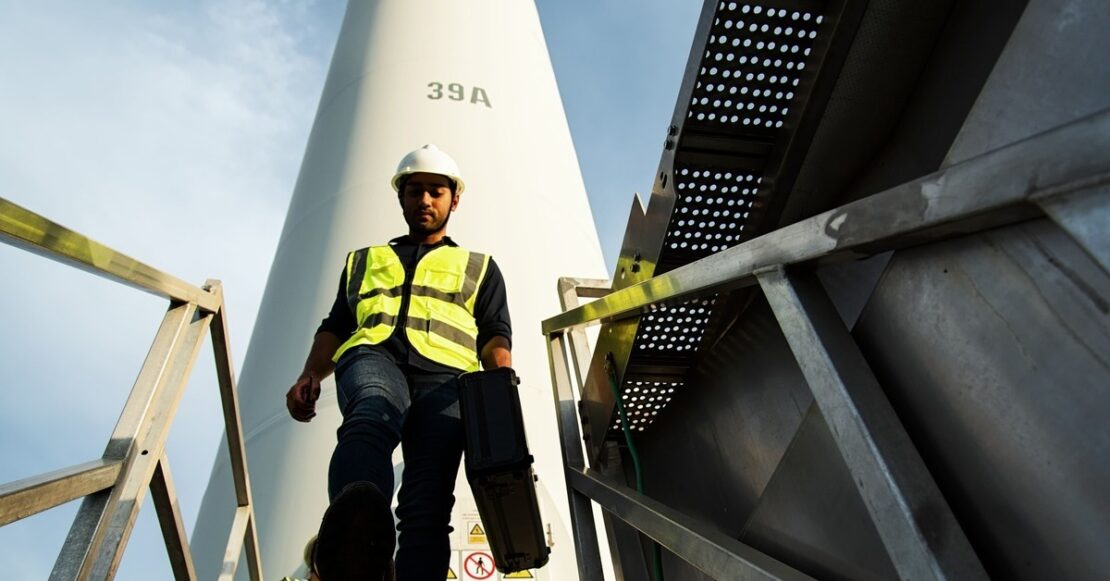
With the rise of renewables, the UK energy industry is changing at a rapid pace. As a result, robust, effective security systems are a critical aspect of protecting wind, solar farms, and BESS sites. This article focuses on protecting renewable sites and critical infrastructure.
These sites face various threats such as break-ins, theft, sabotage, and vandalism. The significance of robust security measures cannot be overstated, as they ensure the uninterrupted operation and longevity of these valuable energy resources.
Security measures for renewable energy sites
To combat physical threats, owners and operators of renewable energy sites must implement comprehensive security strategies.
CCTV surveillance plays a pivotal role in detecting and deterring thieves. It provides real-time monitoring, aiding in the prompt response to any suspicious activities.
Furthermore, perimeter security and intruder detection systems are equally important, creating a formidable barrier against intrusions.
Additionally, remote alarm monitoring ensures a swift reaction to any security breaches, mitigating potential damages.
These solutions form part of an integrated approach to securing and protecting energy sites across the UK.
The importance of cybersecurity in the renewable energy sector
With the growth of this sector, cybersecurity is crucial for renewable energy sites. The interconnectedness of these systems makes them vulnerable to cyber threats. Robust cybersecurity measures are vital to safeguard sensitive data and ensure the integrity of the energy supply.
As renewable energy technologies evolve, they become more integrated with the grid, increasing the potential impact of cyber-attacks. Protecting these systems from digital intrusions is as important as physical security, ensuring uninterrupted clean energy production and distribution.
Proactive cybersecurity strategies are key in preventing data breaches and maintaining the reliability and trustworthiness of renewable energy sources.
Best practices for securing the UK’s energy infrastructure
Adopting best practices is crucial for maintaining secure energy infrastructure. This includes network security, data protection, incident response planning, and managing third-party risks. Regular audits and updates to security protocols are essential to stay ahead of potential threats.
Ensuring a sustainable and resilient energy transition
The global energy crisis and the shift towards renewable sources underscore the need for reliable energy site security. It is a cornerstone in ensuring a steady, resilient energy supply and a successful energy transition.
The interconnectedness of renewable energy systems necessitates a holistic approach to security. Collaboration and information sharing among stakeholders are vital to identify and mitigate risks effectively.
Summary: Protecting renewables sites & critical infrastructure
Energy site security is indispensable in safeguarding renewable energy assets. The risks and fallout of sites being vandalised, operations disrupted along with stolen hardware can have a ripple effect across the energy grid.
Therefore, implementing robust physical and cybersecurity measures is not just a necessity but a responsibility towards ensuring a sustainable and secure energy future.
Energy is the lifeblood of our daily lives, our economy, and the industries that operate within it. As a result, partnering with an experienced renewable energy site security company is paramount to meeting the needs of EPC & O&M companies.
Quickfire article FAQs
Need a quick recap? Here are some short summaries of the sections covered in this article.
What are the main security threats faced by renewable energy sites?
Renewable energy sites are primarily threatened by physical breaches like break-ins, theft, and vandalism, as well as cyber threats targeting interconnected systems.
What is the impact of crime at renewable energy sites?
The impact of crime at renewable energy sites can be significant, leading to costly equipment theft, damage, and operational disruptions. It also poses risks to energy supply stability and can result in substantial financial losses and safety concerns.
How can physical security measures help protect renewable energy assets?
Physical security measures such as CCTV, perimeter security, and alarm systems play a crucial role in deterring and responding to intrusions, theft, and vandalism.
What are some cybersecurity risks specific to the renewable energy sector?
Cybersecurity risks include data breaches, hacking of control systems, and other forms of cyberattacks that can disrupt the energy supply.